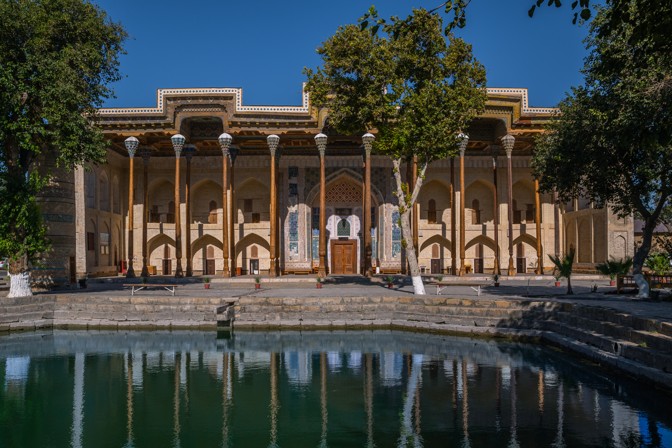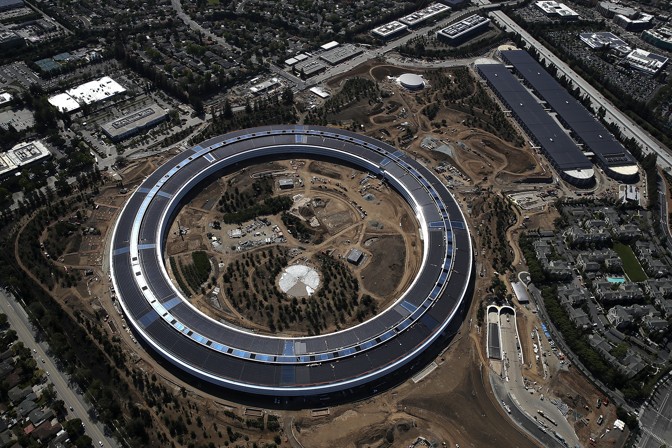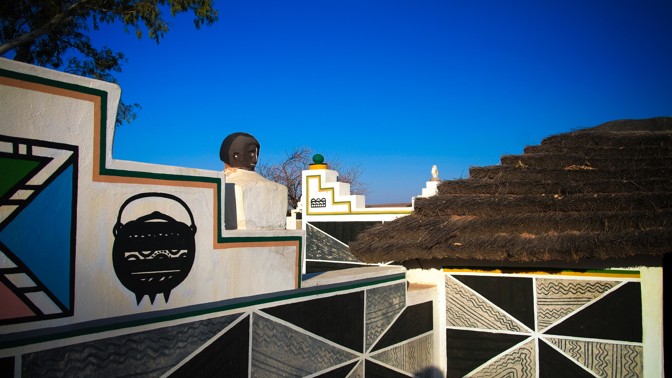Some time ago, I woke up in a hotel room unable to determine where I was in the world. The room was like any other these days, with its neutral bedding, uncomfortable bouclé lounge chair, and wood-veneer accent wall—tasteful, but purgatorial. The eerie uniformity extended well beyond the interior design too: The building itself felt like it could’ve been located in any number of metropolises across the globe. From the window, I saw only the signs of ubiquitous brands, such as Subway, Starbucks, and McDonald’s. I thought about phoning down to reception to get my bearings, but it felt too much like the beginning of an episode of The Twilight Zone. I travel a lot, so it was not the first or the last time that I would wake up in a state of placelessness or the accompanying feeling of déjà vu.
The anthropologist Marc Augé gave the name non-place to the escalating homogeneity of urban spaces. In non-places, history, identity, and human relation are not on offer. Non-places used to be relegated to the fringes of cities in retail parks or airports, or contained inside shopping malls. But they have spread. Everywhere looks like everywhere else and, as a result, anywhere feels like nowhere in particular.
[Read: The smartphone has ruined space]
The opposite of placelessness is place, and all that it implies—the resonances of history, folklore, and environment; the qualities that make a location deep, layered, and idiosyncratic. Humans are storytelling creatures. If a place has been inhabited for long enough, the stories will already be present, even if hidden. We need to uncover and resurface them, to excavate the meanings behind street names, to unearth figures lost to obscurity, and to rediscover architecture that has long since vanished. A return to vernacular architecture—the built environment of the people, tailored by and for local culture and conditions—is overdue. It can combat the placelessness that empires and corporations have imposed.
Historically, political and economic dominance have dictated building styles. The proliferation of an empire’s architecture charts its spread: places of worship, military installations, government buildings, and entertainment forums. In the West, Greco-Roman-style monuments, including the United States Supreme Court building and the British Museum, invoke legitimacy by lineage to the cradles of civilization. Some empires absorbed regional styles, such as the Indo-Saracenic style of the British Raj, derived from the Indo-Persian buildings of the Mughal empire. Others evolved over the centuries: Islamic architecture encompasses both Moorish horseshoe arches and the turquoise domes of Uzbekistan, but the unified features such as minarets and geometric ornaments tell you these are lands conquered and converted by Muslim empires.

In former colonies, such hegemonic architecture—so named because those in power imposed it—can seem wildly out of place. Fragments of France can still be found in Hanoi and Ho Chi Minh City. Mussolini’s fascist regime built a host of streamlined, Italian Futurist structures in Asmara, Eritrea. Various European empires are ignominiously remembered in slave castles such as Fort Christiansborg and Castelo de São Jorge da Minain Ghana. Had they won the war, the Nazis intended to build frontier homesteads and model towns, linked by the autobahn, upon the killing fields of Eastern Europe.
Commercial builders also emulate architecture that conveys a desirable image. At the turn of the 20th century, the administrators and businessmen of Meiji Japan commissioned Western architects to modernize their country, adopting the structures of supposed Western progress. So did the sultan of Zanzibar, whose House of Wonders has European characteristics, along with a front entrance large enough to ride his elephant through.
It was only a matter of time before corporations began to construct their own hegemonic visions of urban life. In 1928, an American town sailed up a tributary of the Amazon. It came in pieces, to be assembled into shingled houses with lawns and picket fences, a Main Street, a dance hall, a cinema, and a golf course. Henry Ford was the visionary behind the development; his aim: to control the rubber industry via exported Americanism. He named it Fordlândia.
The settlement failed dramatically. The jungle was unforgiving, and the settlers were unprepared for malarial fevers and snake attacks. Cement and iron were unsuited to the humidity. Blight spread through the rubber plantation, which had been cultivated too intensively. Ford’s promises of free health care and fair wages were undermined by puritanical surveillance, cruelty, and incompetence. Eventually, the workers rioted. As a utopia, Fordlândia was probably doomed from the start, given its founding in neocolonial arrogance. But despite its failure almost a century ago, Fordlândia successfully predicted the future of cities: utter sameness, exported globally.

In the decades that followed, corporate architecture of the sort outside my hotel room adopted designs that expressed corporate power. It became slick and monolithic. Ruthlessly rational, it exudes aloofness—its denizens exist high above the streets in glass-and-steel boxes that maximize the expensive floor space. The earliest of these structures were inspired by Ludwig Mies van der Rohe’s 1959 Seagram Building, which set the archetype until the 1980s. The New Formalists tried to temper this model with humanizing, historical touches—the tall, pseudo-gothic arches with which Minoru Yamasaki embellished the World Trade Center, for instance—but even then, it often harked back to earlier symbols of dominating power, like Greco-Roman classicism had done.
Eventually, aware of appearing cold and remote, corporate architecture underwent an image change. Its buildings now resemble its brands: cooler, cuter, greener, more knowing and ironic. The doughnut-shaped mothership of Apple Park or the biodome spheres of Amazon’s Seattle campus offer examples.
[Read: The myth of Apple’s great design]
But these structures might be worse than the indifferent, modernist monoliths they replaced. At least the glass towers made clear that their occupants didn’t care about you, or maybe anyone. Now headquarters buildings express the hypocrisy of corporate gentility. Apple Park, with its circular form and large central garden, telegraphs connection and collaboration. But its real message is power: It is one of the most valuable corporate headquarters in the world, echoing the Pentagon in size and ambition. Shaped like a spaceship, it also suggests to the local community, which grants Apple huge tax breaks, that the company could take off and relocate anywhere in the world, whenever it wants.
The power and capital of the biggest companies exceed that of many nation states. Corporations now spread their legacy in the built environment the way empires used to. In the process, power is no longer imposed so much as courted, exchanging extraordinary financial incentives for the prospect of jobs, investment, and status.
When Amazon announced its intention to open a second U.S. headquarters in 2017, cities clambered so ignobly that some called the competition “the Hunger
Games for cities.” Fresno, California, offered Amazon joint administration of a century’s worth of tax disbursements. In hindsight, perhaps Fordlândia failed only because its ambition was too modest; today, rather than even pondering adapting to local conditions, corporations dictate them.
V ernacular is an umbrella term architects and planners use to describe local styles. Vernacular architecture arises when the people indigenous to a particular place use materials they find there to build structures that become symptomatic of and attuned to that particular environment. Augé called it “relational, historical and concerned with identity.” It aims for harmonious interaction with the environment, rather than setting itself apart from it.
Consider the Batak architecture of Indonesia, with its sharp roof ridges and ship-like facades. Compared with the computer-drafted metal and concrete curves of contemporary monuments, Batak’s peculiar beauty is startling. But its lessons go beyond aesthetics. The structures are built using renewable materials from their immediate surroundings. The angled roof lines and exteriors combat the wet climate. By contrast, the use of cement in contemporary construction accounts for as much as 8 percent of global carbon emissions. Batak shows how vernacular architectures that were previously dismissed (or fetishized) as archaic or exotic bear urgent lessons.
Vernacular architecture tells stories. The remarkable circular tulou of Fujian, China, demonstrate how communities can fend off hostile outside forces, whether they be the elements or human, while cultivating a community in their courtyards. Some structures, such as the Minka houses of Japan, reveal the professional categories of their owners. Others speak unique visual languages, such as the colorful geometric facades of Ndebele housing in South Africa and Zimbabwe, traditionally painted by their female occupants. Catholic symbols are marked on the cone-roofed trulli of the winegrowers of the Itria Valley in Italy. And the entire structures of Maori wharenui pay tribute to their ancestors, as if living within a symbolic body covered in carvings.

Interest in vernacular architecture has been on the rise in popular culture, as shown by the popularity of photographic projects such as Christopher Herwig’s Soviet Bus Stops and Sebastian Erras’s Parisian Floors. The revival is welcome, even if it concentrates on retro-futuristic relics or Wes Anderson–esque design sensibilities. But a solely aesthetic approach can have its dangers. When mainstream publications rediscover the surreal and haunting Spomeniks of former Yugoslavia, which documented fascist resistance, the pathos of the monuments is usually stripped away in favor of superficial voyeurism. In cities such as London, developers sometimes employ the vernacular of previous eras to validate destroying them, whether through facadism (keeping the original frontage but demolishing the rest of a building) or by naming anonymous retail developments after the historical features they replaced (ironworks, coal yards, and so forth). Character is a selling point, even when it has been asset stripped.
[Read: The G Word: Gentrification and its many meanings]
Vernacular is not immune to the power of architectural patronage. Dictators have often used nationalist iconography to conceal corruption and autocracy. Mobutu Sese Seko’s decolonizing campaign of authenticité sought to revive African cultural heritage, yet the lasting symbol of his resulting kleptocratic tyranny might be his decaying “Versailles of the Jungle,” Gbadolite. And Saddam Hussein’s Umm al-Ma’arik (“Mother of All Battles”) mosque was built as a monument to self-proclaimed victory in the Gulf War. In these cases, vernacular becomes another form of hegemony.
A habitable future requires combining the best of both worlds. Vernacular alone cannot begin to satisfy the demands of today’s population density, technology, and standard of living. Equally, hegemonic architecture has been unsustainably detached from place with disastrous results, not just environmental but social. Marwa al-Sabouni has written and spoken powerfully about how the introduction of ill-suited hegemonic architecture in Syria fractured communities, helping to fuel the Syrian civil war.
Creativity often works according to a dialectic process. Frank Lloyd Wright sought to “break the box” of Western architecture by shifting geometries, letting the outside in, and designing architecture within a natural setting, as he did with Fallingwater, one of his most famous designs. Wright was inspired by a love of the Japanese woodblock prints of Hiroshige and Hokusai—an influence he would later repay by training Japanese architects such as Nobuko and Kameki Tsuchiura, who reinterpreted European modernist design in Japan. The goal is not to replace glass skyscrapers with thatch huts, but to see vernacular as the future, like Wright did, rather than abandoning it to the past.
Architectural historians such as Liane Lefaivre, Alexander Tzonis, and Kenneth Frampton have given the name critical regionalism to the process of re-localizing architecture. It’s a philosophy more than a movement or a style. The architects associated with it, including Minnette de Silva in Sri Lanka, Lina Bo Bardi in Brazil, and Muzharul Islam in Bangladesh, share commonality in their differences. Modernizing traditional motifs and taking inspiration from the natural world, their architecture is as diverse as the planet, whether that’s the nautical themes of Jørn Utzon’s Sydney Opera House or Alvar Aalto’s harmonizing with the forests and the topography of Finland.
Take the Khmer architect Vann Molyvann, who feared that traditional Cambodian architecture was in danger of being swept aside by the influx of Western design. Instead of adopting a reactionary approach, he sought to learn from these developments to make them his, and his country’s, own. The result was an astonishing adaptation of the International Style for the tropical climate, the rich botanical environment, and the local Buddhist culture. His buildings feature lotus- and pagoda-inspired shapes, and their ingenious systems of ventilation, shade, and water flow promised Phnom Penh a bright and idiosyncratic future, one that was sadly destroyed by the Khmer Rouge just as it was beginning.
[Read: The cities that never existed]
In some cases, new vernaculars are created via distant influences—the reinvention of Chinese moon gates in the neo-Venetian architecture of Carlo Scarpa, for instance. A truly modern architecture would learn from and listen to influences from near and far, rather than ignoring or supplanting them. The Iraqi architect Rifat Chadirji summed the approach up well: “My aim was to create an architecture which at once acknowledges the place in which it is built, yet which sacrifices nothing to modern technical capability.”

Architecture is always at risk of being lost. The most immediate threat is that of conflict. Attacks on heritage sometimes come at the hands of iconoclast insurgents, as in the destruction of Palmyra by the Islamic State, or sectarian conflicts in former Yugoslavia, Northern Ireland,
or Bahrain. UNESCO has repeatedly flagged the dire need to protect vernacular heritage in countries such as Yemen, Syria, Libya, and Mali. These issues are not just manifestations of hatred and division; they are attempts to establish hegemonic dominance over territories and populations. More recently, Chinese authorities have begun destroying Uighur architecture, which is as much a tool of suppression as the building of “reeducation” camps.
But destruction can come in more supposedly benevolent forms too. In recent years, philistine development has threatened to erase the hutong alleys of Beijing and the wooden machiya townhouses of Kyoto. China is undergoing the largest process of urbanization the world has ever seen. The price of this might be captured in iconic photographs of the “nail houses” stubbornly standing in the midst of colossal skyscraper estates. But many of the cultural costs are more subtle—the gradual decline of tulou housing as young people move to the cities. Rather than preserving vernacular in inert museum pieces or allowing it to disappear completely, it must be reinterpreted in living architecture.
In truth, all architecture is vernacular: It is tied to place and to culture, however much glass-and-steel modernism has attempted to deny or ignore this fact. “Starchitects” may design buildings that could crash-land in any city or pay cursory tokenistic homage to their surroundings. Cities may adopt a siege mentality to the environment while being deeply reliant upon it for survival. Modernity’s catastrophe is best captured in the desire to build universal citadels that separate people from the particulars: of cause and effect, of climate, of the natural world, of local culture. To counter those trends requires more than just preserving different styles of buildings. Vernacular architecture reflects who the built environment is by and for. The Egyptian architect Hassan Fathy embraced technical innovations but wedded them to social justice for the poor, making a true architecture of the people, one that “restores a sense of harmony and balance to our relationship with the natural world,” as the architect Ma Yansong has said.
seasteading or terraforming Mars.
But when the artist Olalekan Jeyifous depicts a future Lagos, he does something different, imagining shanty mega-structures that juxtapose, and maybe even reconcile, privilege and impoverishment. His approach underscores the urgency of looking beyond hegemony. The actual future is going to happen everywhere. It will depend on what we can save and revive right now. The issues we face are global, as COVID-19 has reminded us, but they will have specific local character and impact, whether they be sinking cities, wildfires, or flooding. What happens on one side of the planet, via harvests and the migration of people, will matter elsewhere. Construction accounts for 39 percent of energy-related carbon-dioxide emissions, so the built environment stands right at the center of this challenge. Physical walls and psychological boundaries will not keep reality out for long. If there is to be a habitable future, it will need to be vernacular: reengaging with people where they actually live rather than fixated on monumental follies. It’s attractive, and dangerous, to imagine the future will be brand-new when, in truth, it always will be older than the present.